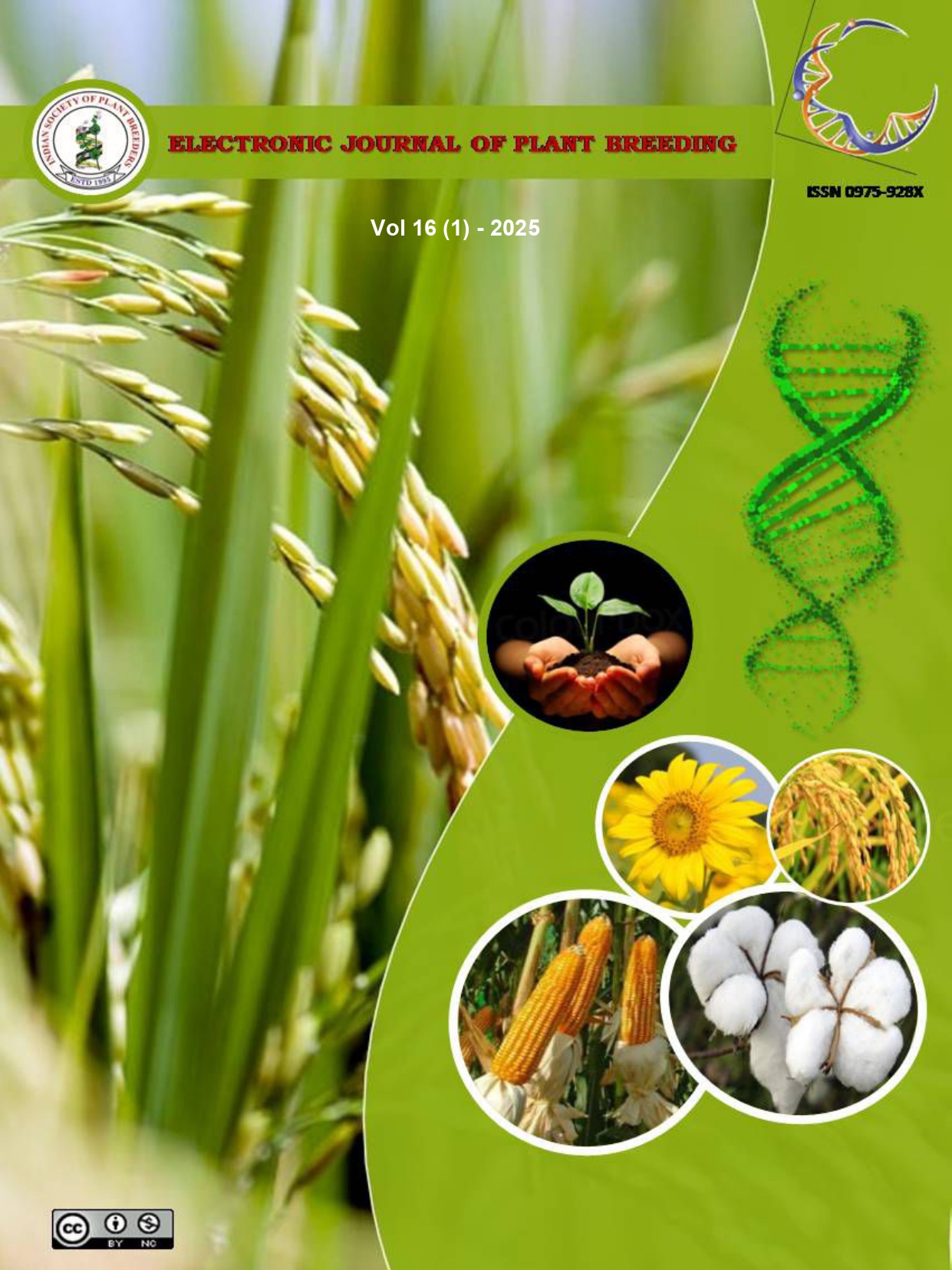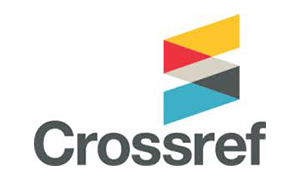Harnessing heterosis in eggplant (Solanum melongena L.)
DOI: 10.37992/2025.1601.005
Abstract
A study was undertaken to examine the extent of heterosis and to identify promising parents and superior crosses in eggplant for yield and its component traits. The experiment consisted of 36 hybrids generated by half diallel mating, nine parents and a standard check. The trial was laid out in a randomized block design with three replications at the research farm, School of Agriculture, LPU, Punjab, during the kharif season of 2022-2023. Analysis of mean squares for 10 traits revealed significant variations among the entries. Heterotic effects, including heterobeltiosis and standard heterosis, exhibited a broad range indicating extensive heterosis for various traits. The hybrid JBR-3 x JBR-5 proved to be the top performer, displaying the highest heterobeltiosis and standard heterosis for total fruit yield per plant, followed by JBL-1 x JBR-5, JBR-4 x JBR-5, JBR-1 x JBR-5, and JBR-5 x JBR-6. The combination JBR-3 x JBR-5 showcased the highest positive and significant standard heterosis for total yield per plant (154.49%) and also exhibited notable negative heterosis for days to 50% flowering (-20.37%), days to first picking (-8.61%), and fruit borer infestation (-40.08%). These factors are vital for leveraging heterosis to improve earliness and resistance in brinjal cultivation. The F1 hybrid JBR-3 x JBR-5, demonstrating a notable capacity for high yield, holds promise for potential commercial cultivation after further assessment
Keywords: Brinjal, Half-diallel, heterosis, fruit borer
Harnessing heterosis in eggplant Solanum melongena L.
. 2025. Electronic Journal of Plant Breeding, 16 1, 110-120. Retrieved from https://ejplantbreeding.org/index.php/EJPB/article/view/5093It is certified that:
- The corresponding author is fully responsible for any disputes arising due to the publication of his/her manuscript.
- The article has been seen by all the authors who are satisfied with its form and content.
- The sequence of names of authors in the by-line is as per their relative contribution to this experiment, giving due credit to all scientists who made notable contribution to it.
- All the authors fully understand that inclusion of any other co-authors or exclusion of any co-authors is not possible once the article has been submitted to the journal.
- The corresponding author takes full responsibility for this article.
- The address of the organization where the research was conducted is given.
- The article is exclusive for this journal, and the results reported here have not been sent (and will not be sent during its consideration by this journal) for publication in any other journal.
- Authors agree to abide by the objective comments of referees and do agree to modify the article into a short note as per the recommendation, for publication in the Electronic Journal of Plant Breeding.
- If published in Electronic Journal of Plant Breeding, the copyright of this article would vest with the Indian Society of Plant Breeders, who will have the right to enter into any agreement with any organization in India or abroad engaged in reprography, photocopying, storage and dissemination of information contained in it, and neither we nor our legal heirs will have any claims on royalty.



